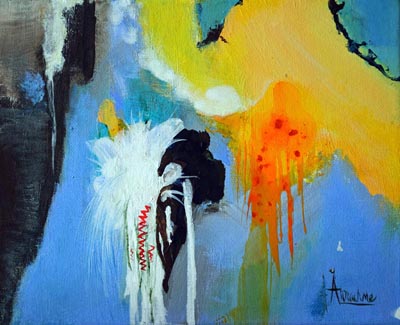Article #37 Easily Influenced
by Arrachme
The influence of teachers on an artist’s painting style is a topic that has intrigued me, particularly after hearing beginner artists express concerns such as, “I don’t take art classes because I don’t want the teacher to affect my style adversely.” Reflecting on my experience, I believe this fear of diluting one’s style warrants further exploration.
Tutor Versus Teacher
Within the realm of artistic guidance, there are tutors, teachers, and instructors, each playing distinct roles. It’s rare for one artist to engage with all three. A tutor is particularly elusive for several reasons: the student must find compatibility, the tutor must select the student, and there is a financial aspect to consider.
I vividly recall the day an art dealer took my hand, and led me across the street, to a man who would become my tutor. After our initial meeting, he instructed me to bring him five paintings. Curious, I eventually asked, “Why me?” The timing was right, and instead of merely giving me “the look”, he provided an answer: “I chose you for your natural composition.” Despite my inclination towards contemporary abstraction and seascapes, he imparted his experience. We were to paint daily portraits. I had no choice in the matter.
The Tutor
Most master artists who become tutors have a rich backstory to share. My tutor, for instance, recounted his fortune in studying under a renowned master from the Northern European mountains. He viewed his role as passing down a cherished legacy.
Our interactions were intense, while steeped in traditional technical methods. In addition, he imparted culturally diverse approaches, intertwined with brushstrokes and unconventional methods. Combining these seemingly opposing viewpoints appeared nonsensical initially but later revealed itself as the key to every successfully executed painting—finding a unique balance. Abstract-contemporary art and nonobjective paintings draw viewers in, compelling them to identify the source of their allure. It’s the artist’s responsibility to embed this balance.
During his youth, my tutor was instructed to quietly observe artists conversing while painting, learning their mannerisms and techniques. He emphasized that some of the simplest lessons are the most crucial.
Teachers and Instructors
The words teacher and instructor seem to be easily interchanged. The teacher-instructor delivers structured programs to convey concise technical information to multiple students. Their classes, shorter than private tutoring, appeal to mature adults seeking valuable skills without complicated schedules. Instructors adjust class factors like room layout and equipment availability to optimize learning. Personalized attention is given, though less individually focused than with private tutors.
As a teacher, I have observed beginner students, automatically painting in styles reminiscent of Monet, Gauguin, Miro, or even Edvard Munch during an unrelated class. Instead of imposing directives, I reveal the information and encourage them to explore these masters, independently. Witnessing students tap into their inner artists is a gratifying experience. They absorb information at their own pace, incorporating or rejecting elements as they see fit—a process akin to creating a personalized style.
Influence Comparison
In my view, tutors wield significant influence, akin to how parents mold children. They play a pivotal role in shaping an artist’s development. Conversely, the teacher-instructor offers condensed knowledge to time-constrained demographics, ensuring that prior styles remain intact while exposing students to a wealth of artistic possibilities. Empowered students can select the elements that resonate and form their artistic identity without compromise.
For aspiring artists hesitant to enroll in classes, rest assured that art instruction is a safe space where they can absorb knowledge. One can selectively take what is beneficial and leave the rest behind.
Included is my non-objective painting – “Mirroring Sweet Reflections”, which was featured in The Netherlands. Can you figure out what makes it feel balanced?

